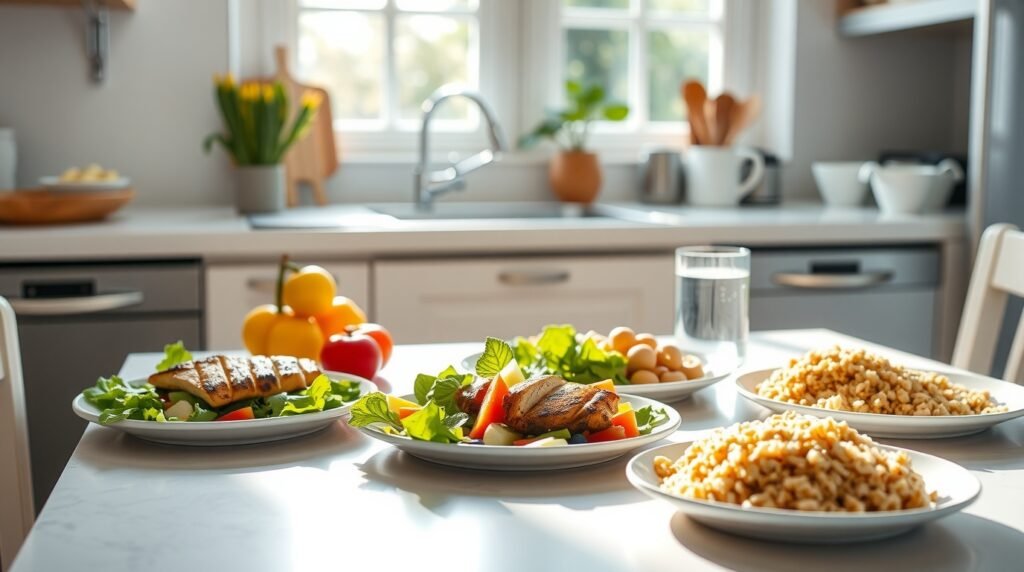
How to Begin Eating Healthier as a Beginner: 7 easy steps
Eating healthy can be intimidating, especially if you’re new to it. There’s so much to know, you may not know where to start. The bright side is that you don’t need to make a lot of changes all at once. Simple things that you can do. Here are seven easy-to-follow steps to help you start eating healthier.
Understand What Healthy Eating Means
Healthy eating isn’t about strict dietary limitations or depriving yourself of the foods you love. That’s right, because you have to put a wide variety of nutrients your body needs into that ice cream! Eat a variety of foods in the right portion sizes, including fruits and vegetables, whole grains, lean proteins and healthy fats. Knowing what the food groups are and what they do for you is a good first step to making healthier choices.
Start Planning Your Meals
One of the biggest factors that can influence how healthy you eat is meal planning. Find time to meal plan Each week make some space for a little bit of meal prep. Follow these meal planning tips to be successful:
- Select recipes using all-natural ingredients.
- Write your meal plan and shopping list.
- Cook in bulk to save time.
It will not only help you make healthier choices, it will save you from grabbing something unhealthy at the 11th hour.
Eat More Fruits and Vegetables
Eating more fruits and vegetables is one of easiest ways to upgrade your diet. They lood up minerals, vitamins and fiber. Start with modest goals; for example, add a piece of fruit to breakfast and eat smart lunch portions. Try to add more different fruits and vegetables over time, and don’t limit yourself for what you can eat. This will add flavor while supplying some nutrients, without additional calories.
opt For Whole Grains Instead Of Refined Ones
Making the move to whole grains is another big one. Whole grains are higher in nutrients and fiber than refined grains. Think about replacing white bread with whole grain bread and white rice with brown rice. Such small tweaks can help keep you fuller longer and stabilize your blood sugar.
Be Mindful of Portion Sizes
Knowing your portion sizes can stop overeating and is an essential part of balanced eating. To help manage portions, use smaller plates or measure your portion sizes when possible. Mindful eating — taking time to savor your food and not eating while distracted — can also help you become more aware of when you’re satisfied. It is a constructive practice that promotes better relationship with food.
Stay Hydrated
Water consumption is an essential aspect of overall health that can get overlooked sometimes. Staying properly hydrated can assist with keeping up energy levels, staying regular (you’ve heard of the whole ‘an apple a day keeps the doctor away’ thing?—something similar applies to plain old water), and controlling your appetite. You should be aiming for at least eight glasses a day, and it might help to keep a water bottle with you as a reminder. If plain water doesn’t taste good to you, try tossing in some citrus or cucumber slices for a refreshing variation.
Allow Yourself Some Flexibility
Don’t forget that eating healthy doesn’t have to be boring, it can be fun! Don’t deny yourself of your favorite treats every now and then. You need balance in all diet. If you’re overly restrictive, you may leave yourself feeling deprived and more inclined to be swayed by temptation. Eating pleasure holds an important place in a healthy lifestyle, so find the right balance for you.
Beginning to eat healthier need not be complex. With these seven, simple steps you’ve set the stage for lifelong health. And remember, small steps and not rushing are the way to go! Every little effort contributes to a healthier you.
Understanding Nutritional Labels: Decoding Your Food
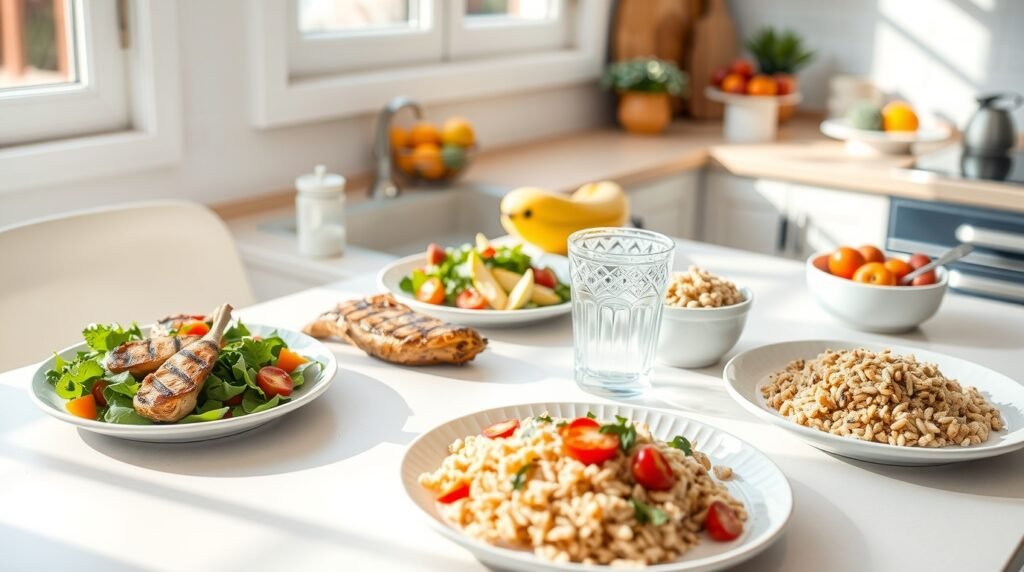
Reading nutrition labels is crucial to eating right and maintaining a healthy diet. Whether your goal is weight loss or you simply want to avoid certain ingredients and eat healthier food, understanding how to read a label like this can be the difference between eating well or not. Below, let’s disassemble the parts of this label and see how you can use it to improve your eating style.
Serving Size
The first thing to look for is serving size. This number typically appears at the top of the nutritional label and indicates what portion of all 10 acres, er, I mean the product comprises a single serving. Keep in mind, many packs have more than one serving so you need to account for this when reading the nutritional information. For instance, if you read on a bag of chips that the serving size is 10 chips and you eat 20, you’re doubling the calories and all other nutrients!
Calories
Calories represent the energy you get from eating the food. If you are keeping track of your weight, it’s important to understand calorie content. Those considerations combine with an enthusiasm for exercising even if it’s cool and rainy — sitting around all day doesn’t seem much of a frolic — so you might just be able to convince them that the exercise is what will keep those chips at bay. It’s useful to compare the calorie content of similar products while making better decisions.
Macronutrients
Macronutrients as they appear on nutrition labels are typically split into three headliners:
- Protein: Essential for the growth, repair and functioning of your body, particularly your muscles. It’s important to maintain a balanced diet with protein, particularly if you’re active.
- Carbohydrates: This is your body’s main source of energy. You’re looking for complex carbohydrates and some fiber, which means you’ll have energy for the long haul.
- Fats: You need fats in your diet, but try to eat healthful sources like avocados, nuts and olive oil. Reduce saturated and trans fats found in many processed foods.
Sugars
Nutrition labels usually will list the total sugars in a given product, and many also will itemize added sugars. It’s a good idea to cut down on added sugars which can add up and lead to an array of health issues such as weight gain and diabetes. The American Heart Association advises women to consume no more than 6 teaspoons (25 grams) of added sugar, and men no more than 9 teaspoons (38 grams) a day.
Fiber
Fiber is another important factor to take into account. Foods that are high in fiber can help with digestion and make you feel full for longer, which can aid with weight control. Seek out products that have a minimum of 3 grams of fiber per serving.
Vitamins and Minerals
Most nutritions labels will also include a few important vitamins and minerals, such as vitamin D, calcium, iron and potassium. These nutrients are essential for the body and hence should be included in a diet. When selecting packaged foods, try to select those with a higher amount of these nutrients so that you can look how they add up to your overall daily value.
Percent Daily Value (%DV)
The %DV (daily value) informs you how much a nutrient in a serving of the food contributes to a daily diet based on 2,000 calories per day. A %DV of 5 percent or less is low, and 20 percent or more is high. With this information, you may be able to determine if a product is a good source of certain nutrients. Look for products that contain a higher %DV of vitamins and minerals and lower %DV of saturated fats, cholesterol, and sodium.
Ingredients List
Don’t overlook the ingredients list. Ingredients are listed by weight, with the heaviest at top, so the first few ingredients make up the bulk of the food. As you scan the ingredient list, choose foods that are whole or recognizably part of the food supply and steer clear of products listing long rows of synthetic ingredients or preservatives.
When you know how to read and interpret this information, you can arm yourself with the knowledge needed to make informed choices that are in sync with your health goals. Be sure to always check the nutrition facts when buying products, and feel free to refer to reputable dietary guidelines if you would like tailored advice for health concerns. Healthy eating begins with knowing what is on your plate!
Easy Meal Prep Ideas For Healthy, Stress-Free Living
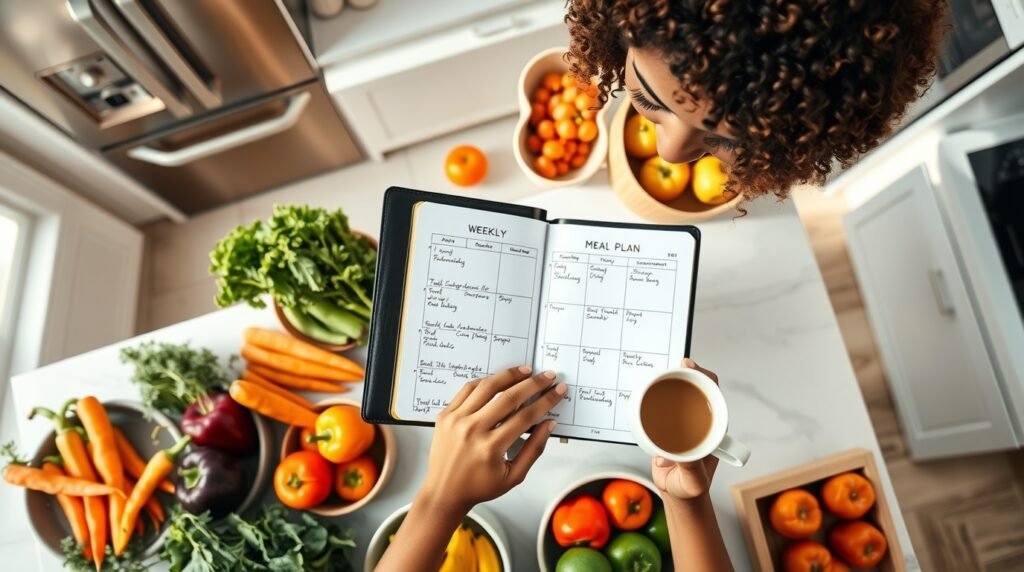
When you plan your meals in advance, it can make a world of difference when it comes to have a healthier lifestyle. A little meal prep goes a long way, saving you tons of time when life gets hectic and making it easier to make healthier choices. These are easy meal prep ideas that can keep you on the right track with your health plans.
Choose Versatile Ingredients
Begin with foods that are versatile across multiple meals. Some versatile options include:
- Brown rice or quinoa
- Chicken breast or tofu
- Green leafy vegetables such as spinach or kale
- Red peppers and other veggies with a pop of color
- Eggs
You can interchange these ingredients to create multiple different meals throughout the week.
Prepare in Bulk
Big batch cooking can be a time-saving and efficient approach. Pick a day (often Sunday) to get all of your meals ready for the week. Here’s how to do it well:
- Prepare a large pot of brown rice or quinoa.
- Grill or roast a few pieces of chicken, or some tofu in one batch.
- Roast a sheet of vegetables in the oven.
- Hard boil some eggs to have a healthy but satisfying protein snack.
This will not only save you time, but also ensure that you never run out of healthy options.
Use Clear Containers
The storage is important for meal prep. And, opt for clear stackable containers so your food is always visible. Label each container with the name of the meal and date. This will help make sure your meals are organized and prevent food waste.
Diversify Your Meals
It gets boring eating the same thing every day. Be sure to make several different types of meals so your taste buds don’t get bored. Here are some ideas:
- Chicken and Veggie Stir-fry: Toss chicken, bell peppers, and broccoli with soy sauce.
- Salad de Quinoa: Toss together cooked quinoa, black beans, corn, diced tomatoes and a lime dressing.
- Scrambled eggs with spinach and salsa in a tortilla.
- Oven-Baked Salmon: Serve along with asparagus for a fast, healthy dinner.
Using variety of flavors and textures can make your meals much more pleasurable.
Incorporate Snacks
Don’t forget about snacks! Keeping healthy snacks nearby makes it less likely to reach for unhealthy food on the run. Some easy snack ideas include:
- Hummus with carrot sticks
- Greek yogurt with honey and mixed berries
- Nuts and seeds
- Fruit like an apple or banana
If you do this, and pre-package your snacks they will be quicker to grab when you are feeling hungry.
Focus on Fresh Produce
Fresh fruits and vegetables should also be a go-to in your meal prep. They are a low-calorie, nutrient-rich type of food, and they work well for all those people out there who want to watch their weight. Feel free to wash, chop and stash them in containers for easy access during the week. If possible, try to get season produce for the best flavor and nutrition.
Plan Your Week
Spend some minutes sketching out what your meals for the next week are going to be. Jot down what you intend to eat for breakfast, lunch, dinner and snacks. And of course factor in any social occasions or gatherings which will interfere with your MEAL PLANNING. This way you won’t get caught without anything and it will help to keep you honest about eating healthy.
With these easy meal prep ideas, you can get on track toward a healthier life. This is a great way not only to cut back on your time in the kitchen but let it keep you focused and committed to what you are trying to achieve diet wise. Happy prepping!
Importance of Hydration on Your Healthy Eating Journey
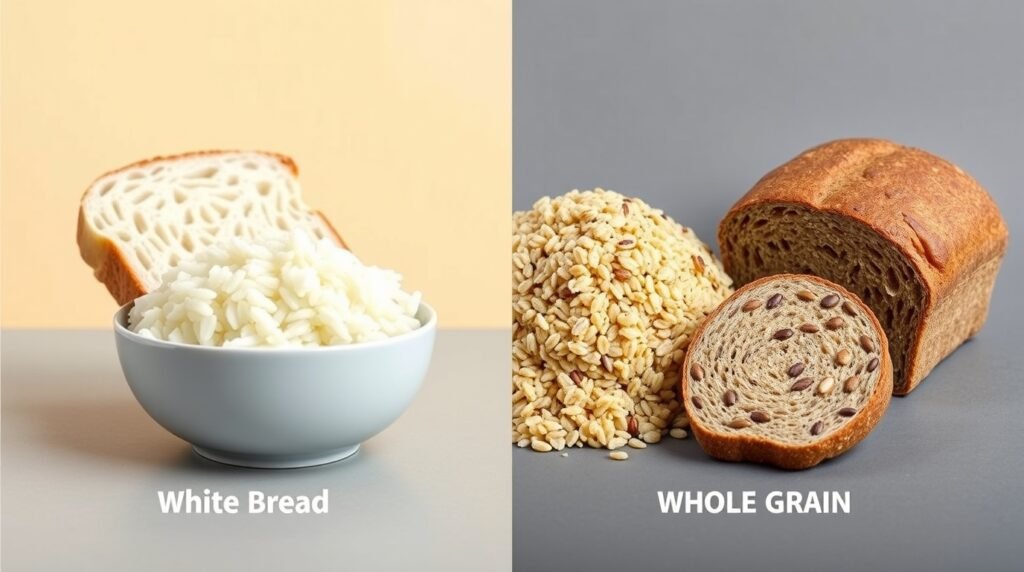
When on a quest to start eating healthy, there’s one important thing that often gets forgotten: hydration. Water is very necessary for good health and also can help get any diet work this way play which will be valid. Realizing why it’s so important to stay hydrated can make a real difference to how you feel on a day-to-day basis and also your longer term health.
The Place of Water in The Body
About 60% of your body is water. This fluid is need for almost any and all bodily functions. This is some of what it does:
- Keeping Body Temperature: Water keeps you cool during exercise.
- Supporting Digestion: Proper hydration aids in the digestion of food and the absorption of nutrients.
- Boosting Physical Performance: Being well-hydrated gives you more energy and endurance, which is important to help you stay the course with your healthy eating.
- Detox: This helps you in the detoxification process by helping your kidneys and liver to flush out toxins.
Effects on Appetite, Feeding and Body Weight
Staying hydrated can also be a significant factor in appetite control, so if you drink enough water throughout the day, you’ll have less need to snack. At times, your body mixes up the signals for thirst and hunger. Staying hydrated can also help fight cravings and prevent overeating. One study presented found that preloading with water before meals results in lower caloric intake. This could be particularly helpful for those who wonder how to control weight and still eat healthy.
How Much Water Do You Need?
How much water you should drink depends on your age, sex, activity level and the climate. As a general guideline, try to drink 8-10 glasses of water each day (equivalent to around 2-2.5 litres). But go by how you feel; the sensation of thirst is a good signal you need more liquid. Here’s a quick reference:
- Men: About 3.7 liters (about 13 cups) of fluids a day.
- Women: About 2.7 liters (9 cups) of fluids a day.
Tips for Staying Hydrated
Mechanical Work Does Not Have to Feel like a Chore. Here are some simple tips for getting more liquids into your day:
- Begin with Water: Seize the hydration first thing in the morning by drinking a glass of water.
- Carry a Water Bottle: This tip allows drinking to stay top of mind as you sit in classes or by the computer.
- Set Reminders: Set reminders on your phone or via apps throughout the day to take sips.
- I also used to add flavor: slice of lemon, a cucumber, or some mint.
Hydration and Exercise
Hydration becomes even more critical for exercise enthusiasts. Sweat and the water and electrolytes it contains are necessary for muscle function. Failing to do so can result in fatigue, cramps and diminished performance. Make sure you get hydrated before, during and after your exercise for best results. Consider the following:
- Drink 1-2 cups of water 1-2 hours prior to exercise.
- When Exercising: Here, shoot for 7 to 10 ounces every 10 to 20 minutes of activity—especially those that are especially high-intensity.
- Post-Workout: Replace Lost Fluids Rehydrate based on how much fluid you’ve lost. A rule of thumb is to consume 16-24 ounces of water per pound that you have lost during exercise.
Watch for Signs of Dehydration
It’s important to realize the warning signs of dehydration. Symptoms may include:
- Is thirsty: Thirst is a sign that your body needs water.
- Dry Urine: The lighter your pee, the more hydrated you typically are.
- Fatigue: Reaching for that 3pm coffee may be a sign of not drinking enough fluids.
- Dry Skin: The condition of your skin can reflect the level of hydration.
As you start that journey toward health, don’t overlook the importance of staying hydrated. It’s a simple and effective strategy to boost their health, maintain their weight and enhance the dining experience. Remember, every sip counts!
Common Dietary Mistakes to Avoid when Trying to Eat Healthier
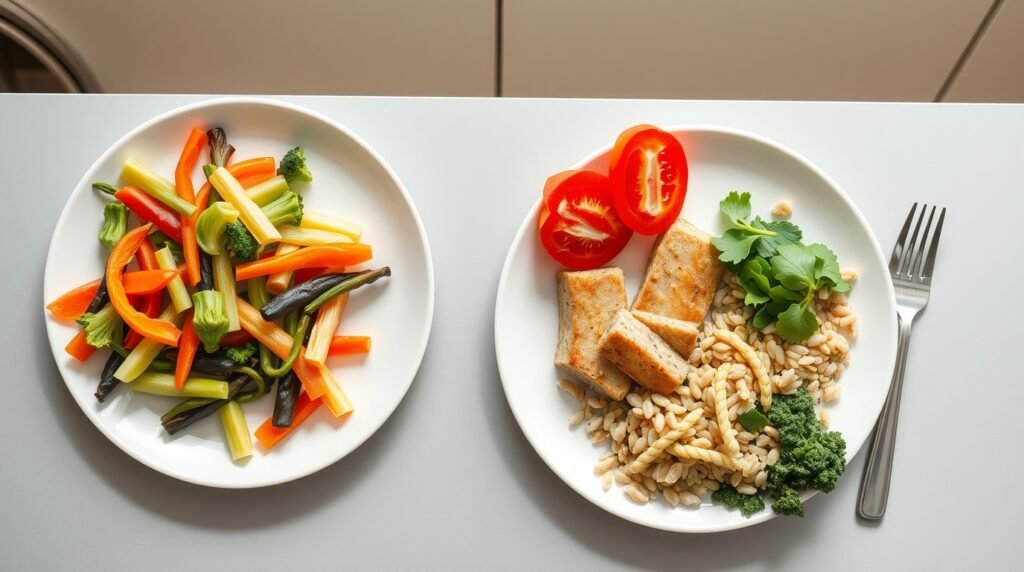
Transitioning to a healthier diet plan can be both thrilling as well as daunting. Most people make simple errors that can sabotage your progress. Here are some mistakes to avoid as you aim to adopt a healthier lifestyle.
Setting Unrealistic Goals
One of the biggest mistakes that people make is to set outlandish goals. Although it’s one thing to be ambitious (and you should be), aiming unreasonably high can end in disappointment and frustration. Begin with goals that are tiny enough for you to achieve and gain momentum from. For example:
- Rather than setting a target to lose 20 pounds in one month, shoot for losing 1-2 pounds per week.
- Decide to eat at home three times a week instead of eating out every day.
Overcomplicating Meal Planning
A lot of beginners think that healthy eating is complicated. That usually translates to stress-worthy meal plans, brimming with complex recipes and hard-to-source ingredients. To avoid this, go easy. Pick five simple dishes that you like and cycle through them each week. That all adds up to less stress and simpler shopping.
Neglecting Portion Control
Some good food can be made a major cause of rapid weight gain when taken in excessive amount. Understand portion sizes Learning about healthier portion sizes is important when making the switch to a healthier diet. Here are some easy ways to stay in control:
- Use smaller plates to help control portion sizes.
- Serve from the kitchen (not the table) to avoid seconds.
- Pay attention to when your body tells you it is time to eat and when you are full.
Relying on Processed “Health Foods”
It is tempting to trade in off the shelf unhealthy snacks for processed health foods, however many alternatives are high sugar additives. Always check labels! Instead, opt for whole foods such as fruits, veggies, lean meats and whole grains which will give you the nutrients you need without added chemicals.
Ignoring Your Cravings
Denying your hunger can make you overeat later. Rather than fight it, see if you can figure out what your body is crying out for. If you have a sweet tooth, grab a chunk of dark chocolate instead of gorging on something sugary. Moderation is key. Healthy eating is not about deprivation, it’s about moderation.
Skipping Meals
Some believe that not eating after a workout will help them lose weight more quickly. However, this can backfire. Starving yourself leads to starvation later, particularly, overeating. Rather, try to have balanced meals with protein, fiber and healthy fats that keep you full all day long.
Not Staying Hydrated
Every diet needs to stay hydrated. Most people mistake thirst for hunger & end up eating when all they really need is a drink. Get into the habit of drinking water all day. You might try keeping a water bottle with you to jog your memory. Try to get at least 8 cups a day, or more if you’re active.
Being Too Hard on Yourself
It’s important to extend self-compassion when trying to change your diet. There will be challenges, and that’s okay. Never allow one terrible day to consume your total effort. Give yourself room to fuck up and to grow from it. Every journey also has good times and bad days, but by keeping a positive mind set you can always get back on track.
Not Seeking Support
Saying goodbye to certain foods can be difficult, and you don’t have to do it alone. Have positive friends, relatives or online groups around you. Tell them your goal and enlist their help. Support can be a game changer when it comes to sticking with what you plan and keeping motivation.
No one wants to make the same mistakes and I guarantee you will be much better off if you avoid these common pitfalls. “Keep in mind that every little thing can help, and you have to be patient with yourself when it comes to long-term change.
Conclusion

Starting down the road to more healthful eating can be an exciting and rewarding experience. When you make the effort to learn what you’re eating and drinking, it becomes easier to be sure that your choices are in line with how you want to prioritize your nutrition. This essential knowledge empowers you to identify hidden sugars, fats and other ingredients that may not fit into your health objectives.
Meal prepping is also a great way to streamline healthy eating. When you take the time to think through meals, and prepare a plan, you’re less likely to choose unhealthy options when you are hungry and tired. Even a simple meal can be healthy and tasty if you use fresh ingredients.
Proper hydration is a fundamental part of your healthy eating plan. Our bodies need water for digestion, supports metabolism and can even help prevent unnecessary snacking. Get in the practice of drinking water all day and slowly replace the bad stuff with healthier options.
As you switch over, be aware of common errors, like jumping to the other extreme with yo-yo dieting or trying to do everything at once. Its’ important to approach this journey slow and steady in a positive way. Celebrate small wins, and give yourself grace in the process.
The simple steps described below will help you get off on the right foot and lead to long-term success in eating healthier. Remember, this is not a journey toward perfection; it’s about making better choices that will help you to feel more fulfilled and healthy! Through your patience and effort, you have the ability to develop lifelong patterns that will improve your quality of life as well as change how you perceive food.